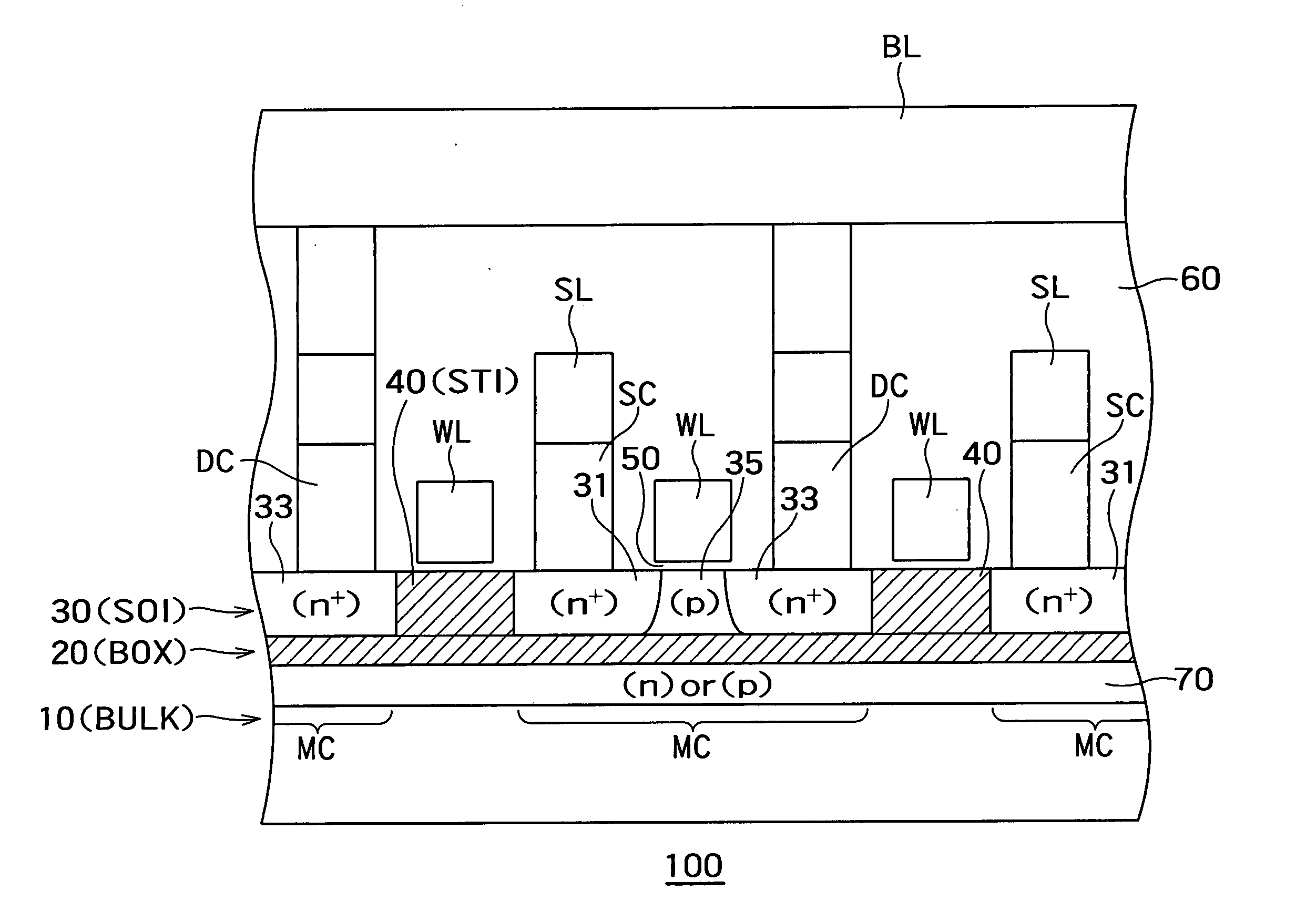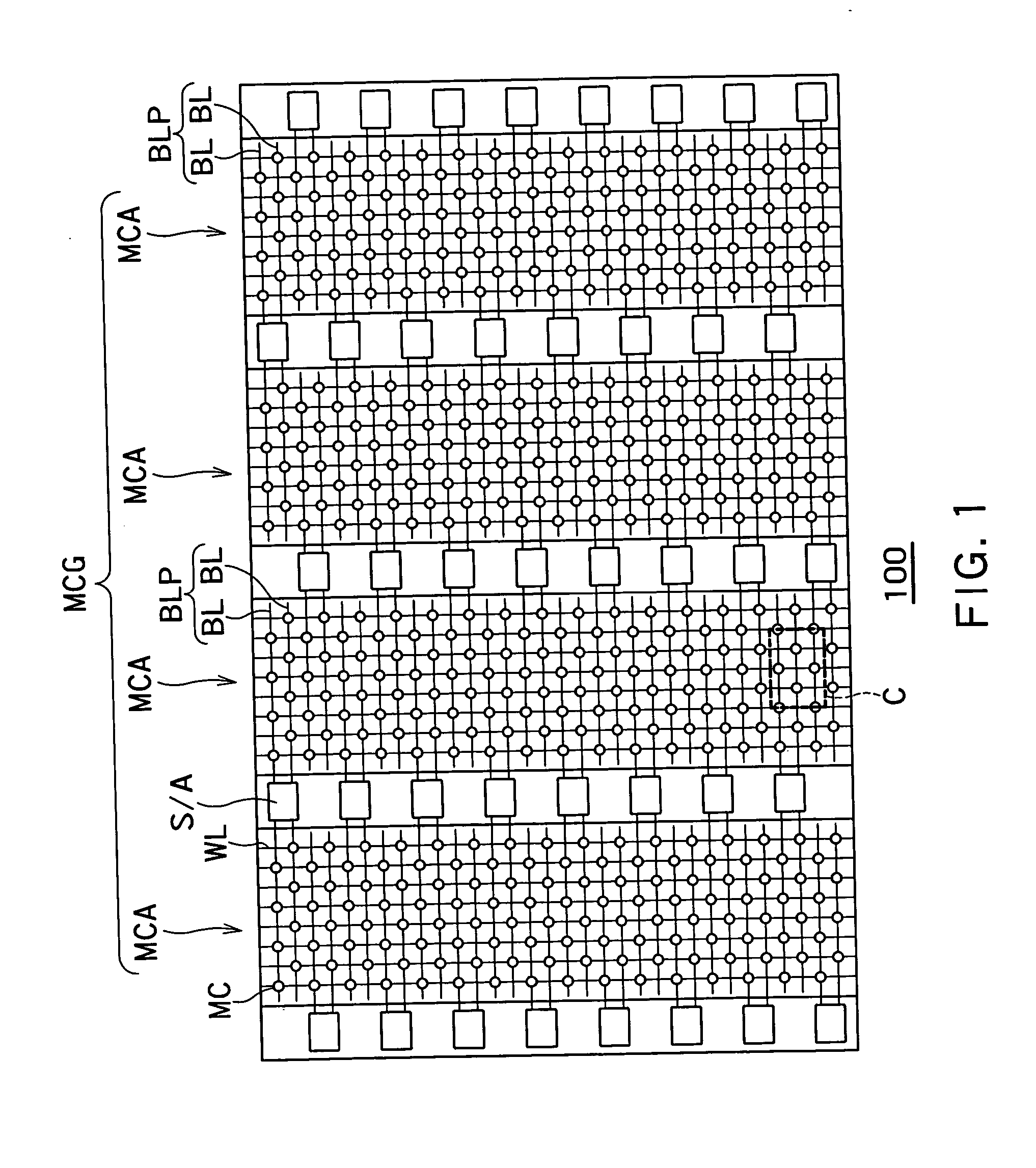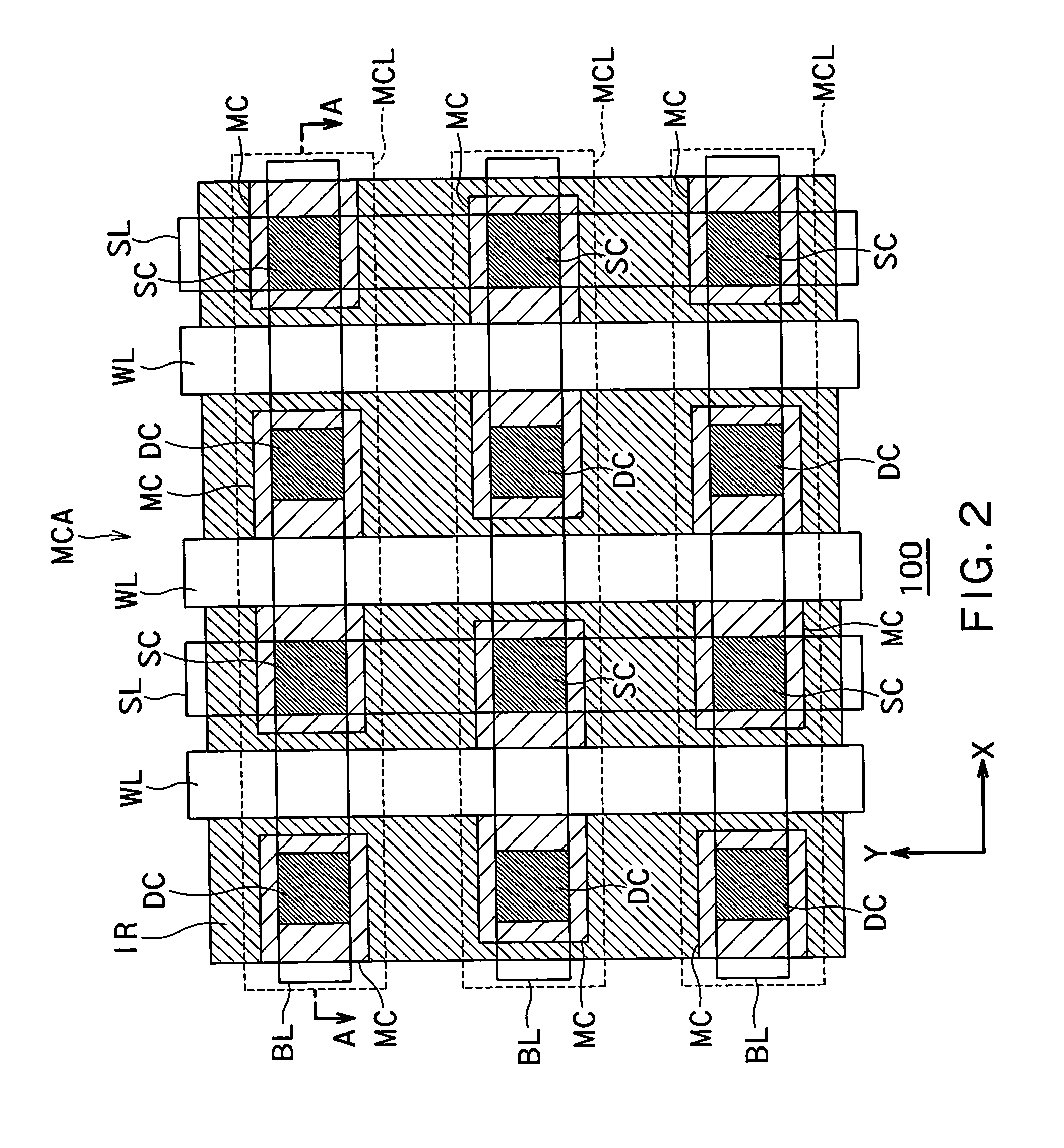Semiconductor storage device
a technology of semiconductors and storage devices, applied in the direction of transistors, solid-state devices, instruments, etc., can solve the problems of increasing the difficulty of conventional 1t-1c (one transistor-one capacitor) type dram cells to be manufactured, the inability of conventional fbc cells to employ an open bit line structure, and the difficulty in the layout of sense amplifiers
- Summary
- Abstract
- Description
- Claims
- Application Information
AI Technical Summary
Benefits of technology
Problems solved by technology
Method used
Image
Examples
first embodiment
[0021]FIG. 1 is a plan view of an FBC memory device 100 according to the first embodiment of the invention. FIG. 1 illustrates one memory array group MCG including four FBC memory cell arrays MCA. Each memory cell array MCA includes a plurality of memory cells MC. Between every adjacent memory cell arrays MCA and at opposite ends of the memory array group MCG, sense amplifiers S / A are located. The sense amplifiers S / A are connected individually to bit line pairs BLP each having two adjacent bit lines BL in a common memory cell array. Sense amplifiers S / A located between adjacent memory cell arrays MCA are connected to such bit line pairs of the memory cell arrays at opposite sides thereof. That is, four bit lines BL (two bit line pairs BLP) are connected to each sense amplifier S / A. The sense amplifiers S / A have transfer gates each capable of connecting the sense amplifier S / A to one of two bit line pairs BLP at different timings.
[0022] In the first embodiment, one word line WL dri...
second embodiment
[0044]FIG. 4 is a cross-sectional view of an FBC memory device 200 according to the second embodiment of the invention. The FBC memory device 200, in its plan view, appears equally to FIG. 2. The second embodiment is different from the first embodiment in the double-layered structure of the word lines. The FBC memory device 200 includes word lines WL1 in the first layer and word lines WL2 in the second layer. The word lines WL1 lie on the body regions 35 whereas the word lines WL2 lie on bit lines BL in parallel with the word lines WL1. The word lines WL2 are electrically connected to the word lines WL1 at positions in predetermined intervals.
[0045] To reduce the difference in work function between the word lines WL1 and the SOI layer 30, the word lines WL1 are preferably made of a material of the same quality as that of the SOI layer 30. If the SOI layer 30 is made of silicon single crystal, then the word lines WL1 are preferably made of doped polysilicon.
[0046] In this case, how...
third embodiment
[0048]FIG. 5 is a cross-sectional view of an FBC memory device 300 according to the third embodiment of the invention. In this embodiment, the FBC memory cell portion is formed in SOI, and the peripheral circuit or logic circuit is formed in the bulk. In the third embodiment, the FBC memory cell portion may be configured according to the first or the second embodiment.
[0049] In the FBC memory cell portion, a BOX layer 20 is formed on a bulk 10, and a SOI layer 30 is formed on the BOX layer 20. Since memory cells MC are formed in the SOI layer 30, they are electrically insulated from the bulk 10. Thus, the body regions 35 can float electrically.
[0050] The BOX layer 20 is not formed in the peripheral circuit or logic circuit, and p-type FETs and n-type FETs are formed in a well diffusion layer formed in the bulk 10. Although FIG. 5 shows only one p-type FET and only one n-type FET, a number of these FETs can be combined to make a logic circuit necessary for the peripheral circuit or...
PUM
 Login to View More
Login to View More Abstract
Description
Claims
Application Information
 Login to View More
Login to View More - R&D
- Intellectual Property
- Life Sciences
- Materials
- Tech Scout
- Unparalleled Data Quality
- Higher Quality Content
- 60% Fewer Hallucinations
Browse by: Latest US Patents, China's latest patents, Technical Efficacy Thesaurus, Application Domain, Technology Topic, Popular Technical Reports.
© 2025 PatSnap. All rights reserved.Legal|Privacy policy|Modern Slavery Act Transparency Statement|Sitemap|About US| Contact US: help@patsnap.com



